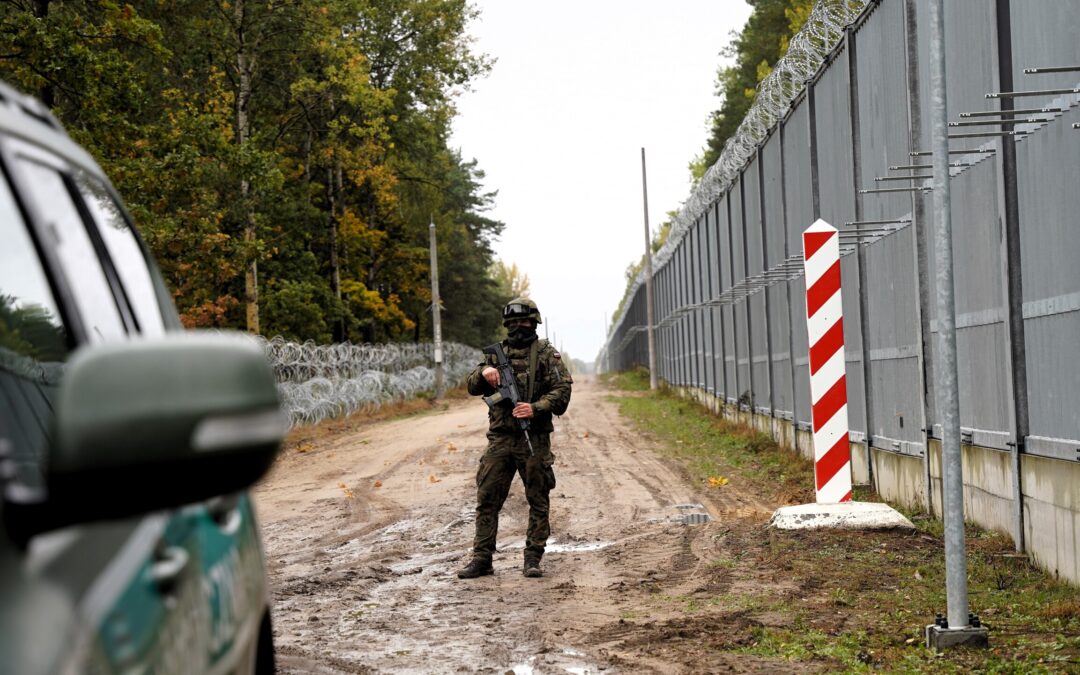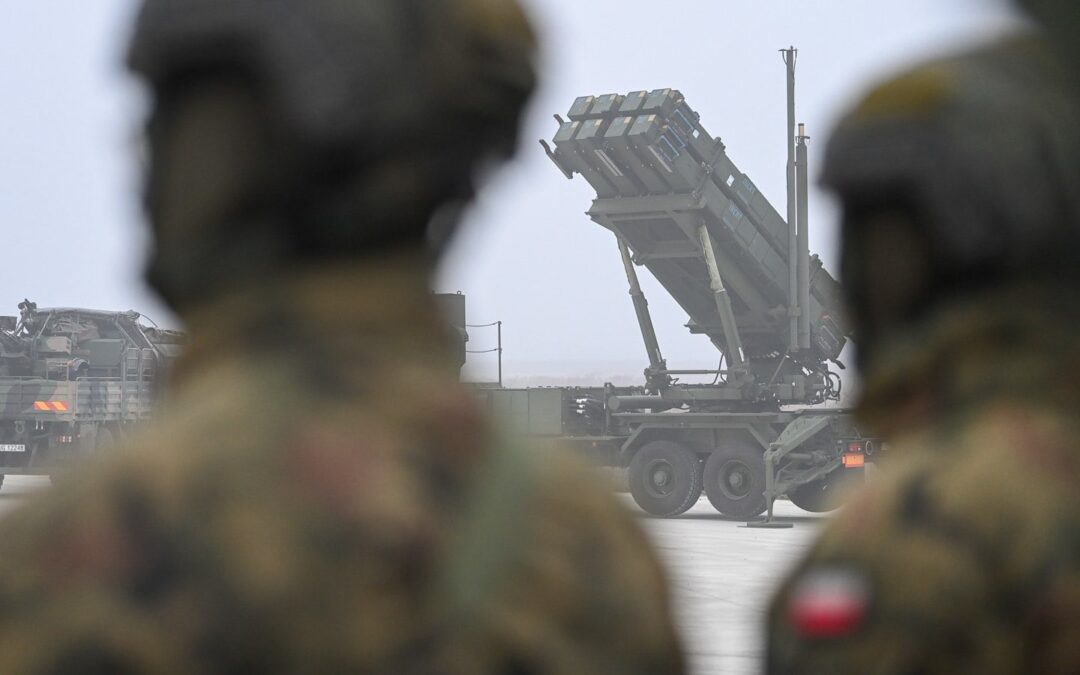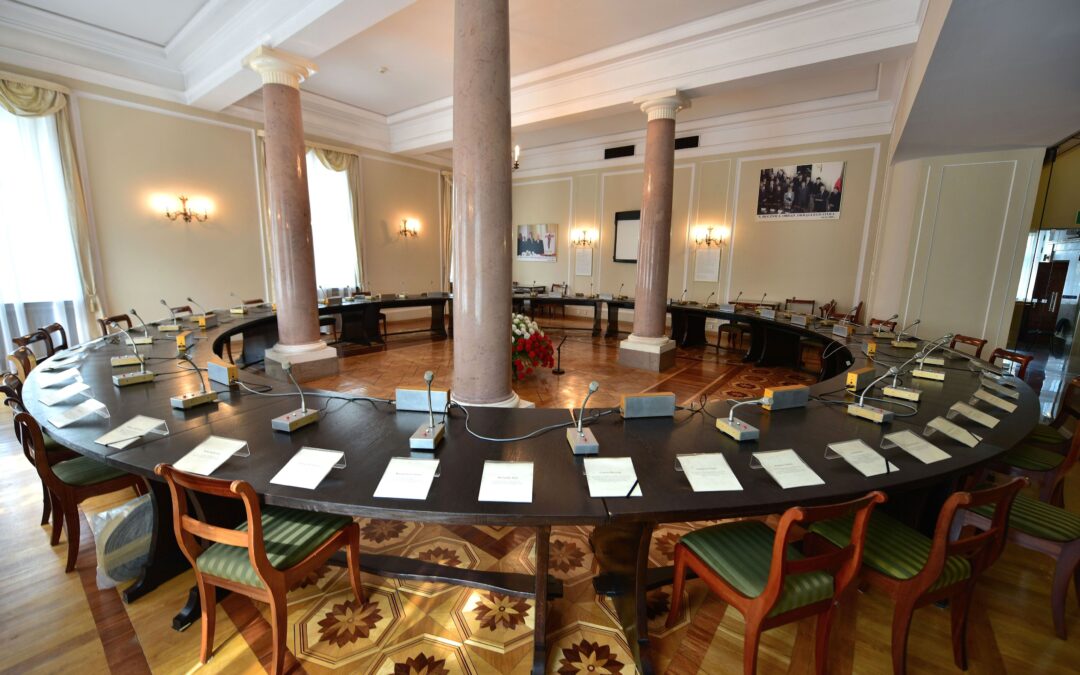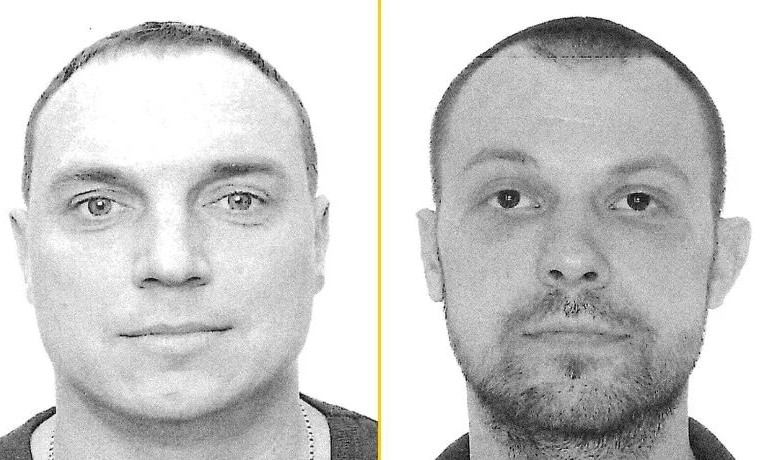Keep our news free from ads and paywalls by making a donation to support our work!

Notes from Poland is run by a small editorial team and is published by an independent, non-profit foundation that is funded through donations from our readers. We cannot do what we do without your support.
The number of attempted border crossings from Belarus to Poland fell by over 50% in the second half of last year after the Polish government implemented tougher new measures to combat irregular migration.
Data obtained by Notes from Poland from the Polish border guard show that, in total, 30,090 attempted crossings from Belarus were recorded across the whole of 2024. That was 16% more than the 26,000 recorded in 2023.
However, the monthly figures show a marked change in the second half of 2024, after the government responded to a rising number of crossings by introducing a buffer zone at the border in mid-June and taking a series of other measures to bolster security there.
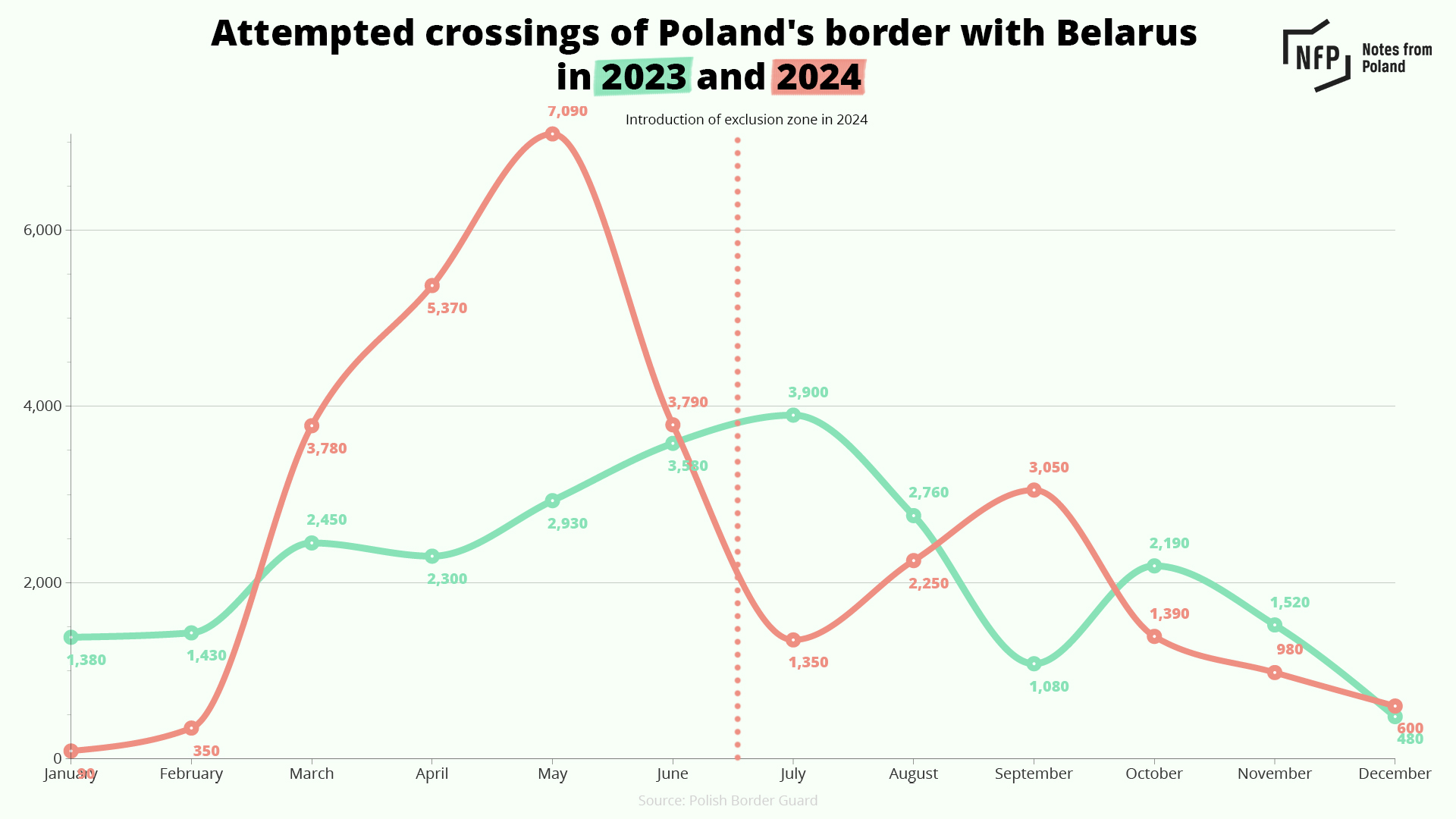
The previous month, in May, a peak of over 7,000 crossings were recorded. By July, the figure had fallen to 1,350.
Between January and May 2024, the monthly average of attempted crossings was 3,336. Between July and December, the figure fell to 1,603, 52% lower. The total number of attempted crossings from July to December 2024 was 9,620, which was 20% lower than the same period in 2023.
“After the introduction of the buffer zone, the [crossings] decreased in these sections by several dozen percent,” border guard spokesman Michał Bura recently told the Polish Press Agency (PAP).
He added that, in the second half of 2024, attempts at illegal border crossings were mainly recorded in sections of the border where the buffer zone is not in force.
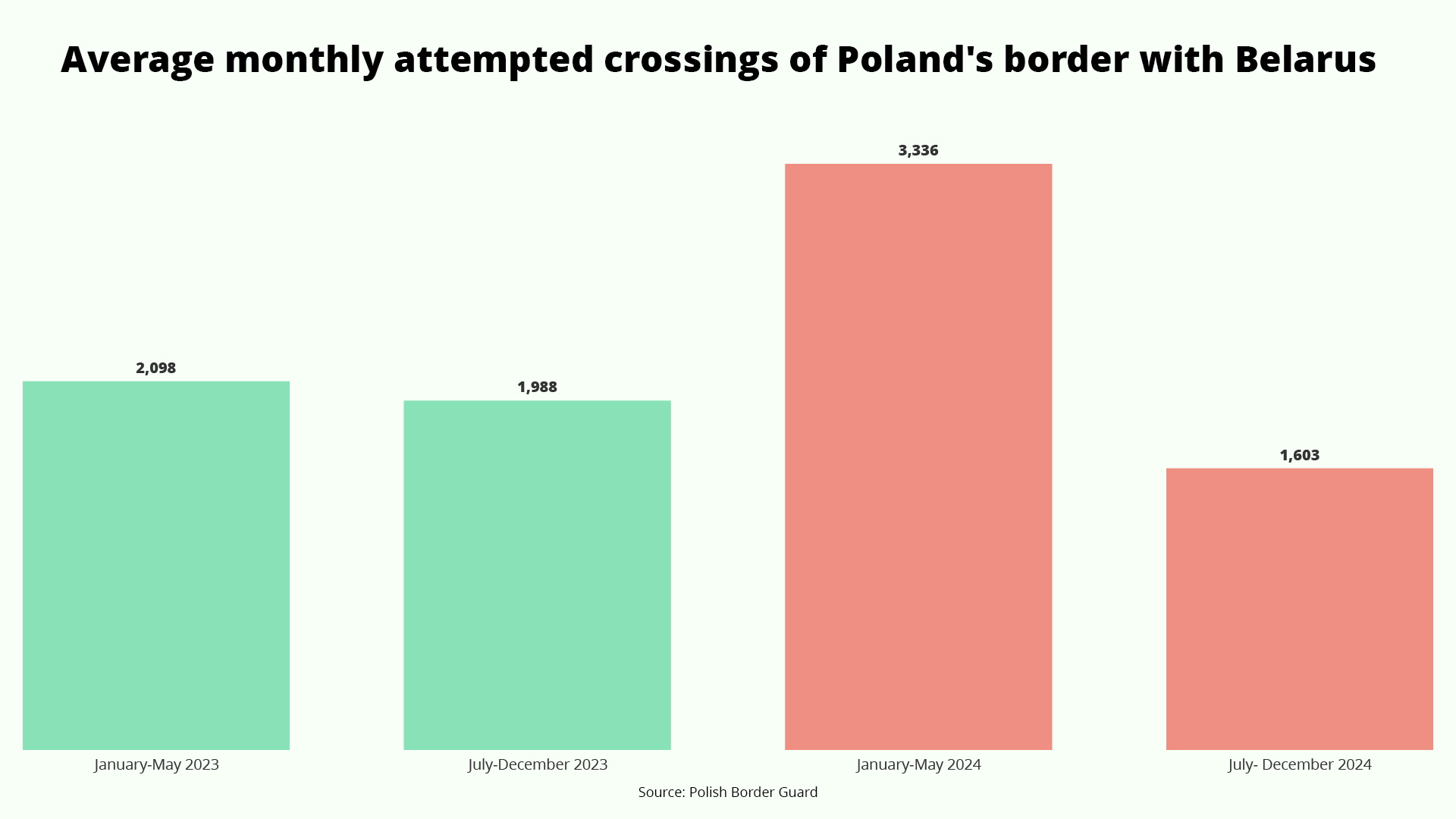
The zone extends along 60km of Poland’s 400km-long border with Belarus. It bans people from being with 200 metres of the Polish side of the border along 44km of that stretch. Along the remaining 16km, located in nature reserves, the prohibited area stretches 2km into Poland from the border.
The measures are aimed at combating the people smugglers who collect migrants once they have crossed the border, as well as easing the work of officers protecting the border.
In August, the government made it easier for officers to use firearms in defence of the border. It has also moved to strengthen the five-metre-tall anti-migrant barrier built under the former Law and Justice (PiS) government and made up of steel fencing and electronic surveillance systems.
Bura told PAP that, in the past, the migrants used car jacks to force their way through the border. But “now, after the fence has been reinforced, this possibility is completely ruled out”.
“Migrants are currently attempting to force their way through the barriers using ladders or through the river borders,” he added. “Both of these methods take a long time, thus giving the Polish services time to react.”
The tough new measures introduced by Prime Minister Donald Tusk’s government have been criticised by human rights activists and some politicians.
Poland’s commissioner for human rights, Marcin Wiącek, warned in June 2024 that the exclusion zone would “interfere with basic constitutional freedoms”, including the right to information and freedom of movement, and “impede the provision of humanitarian, medical and legal assistance” to those crossing the border.
The Council of Europe’s human rights commissioner has voiced concern at Poland’s response to the migration crisis on its border with Belarus.
Poland has written back to him saying that the situation is one "that international law could not have predicted" https://t.co/q2WDXddXSo
— Notes from Poland 🇵🇱 (@notesfrompoland) July 24, 2024
The following month, the Council of Europe’s commissioner for human rights, Michael O’Flaherty, said that the practice of “pushing back” border crossers to Belarus, including some who have sought to claim asylum, may violate international law.
He also criticised the introduction of the exclusion zone as well as the then plans to soften rules on the use of firearms by officers.
However, Warsaw has received support from other European governments as well as the EU itself, which last month granted Poland and other member states bordering Russia and Belarus €170 million to help them strengthen borders against “weaponised migration”.
Since 2021, tens of thousands of migrants and asylum seekers – mainly from the Middle East, Asia and Africa – have tried to enter the EU from Belarus with the encouragement and assistance of the Belarusian and Russian authorities.
The EU is allocating funds to countries neighbouring Russia and Belarus to strengthen borders against the "weaponisation of migrants".
It also says states can introduce measures that “may entail serious interference with fundamental rights such as asylum” https://t.co/mqho2vBZeb
— Notes from Poland 🇵🇱 (@notesfrompoland) December 12, 2024

Notes from Poland is run by a small editorial team and published by an independent, non-profit foundation that is funded through donations from our readers. We cannot do what we do without your support.
Main image credit: BBN (under CC BY-NC-ND 3.0 PL)
